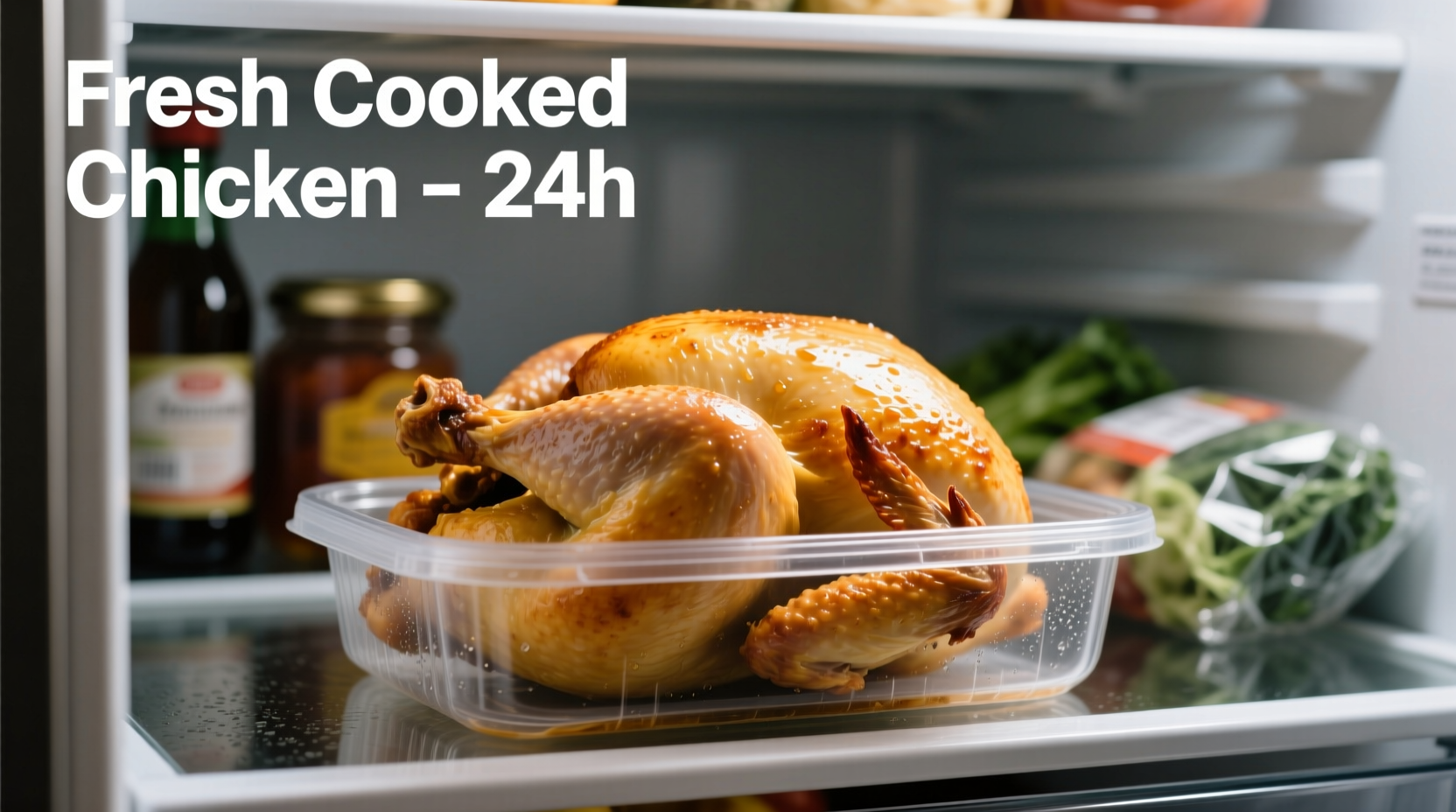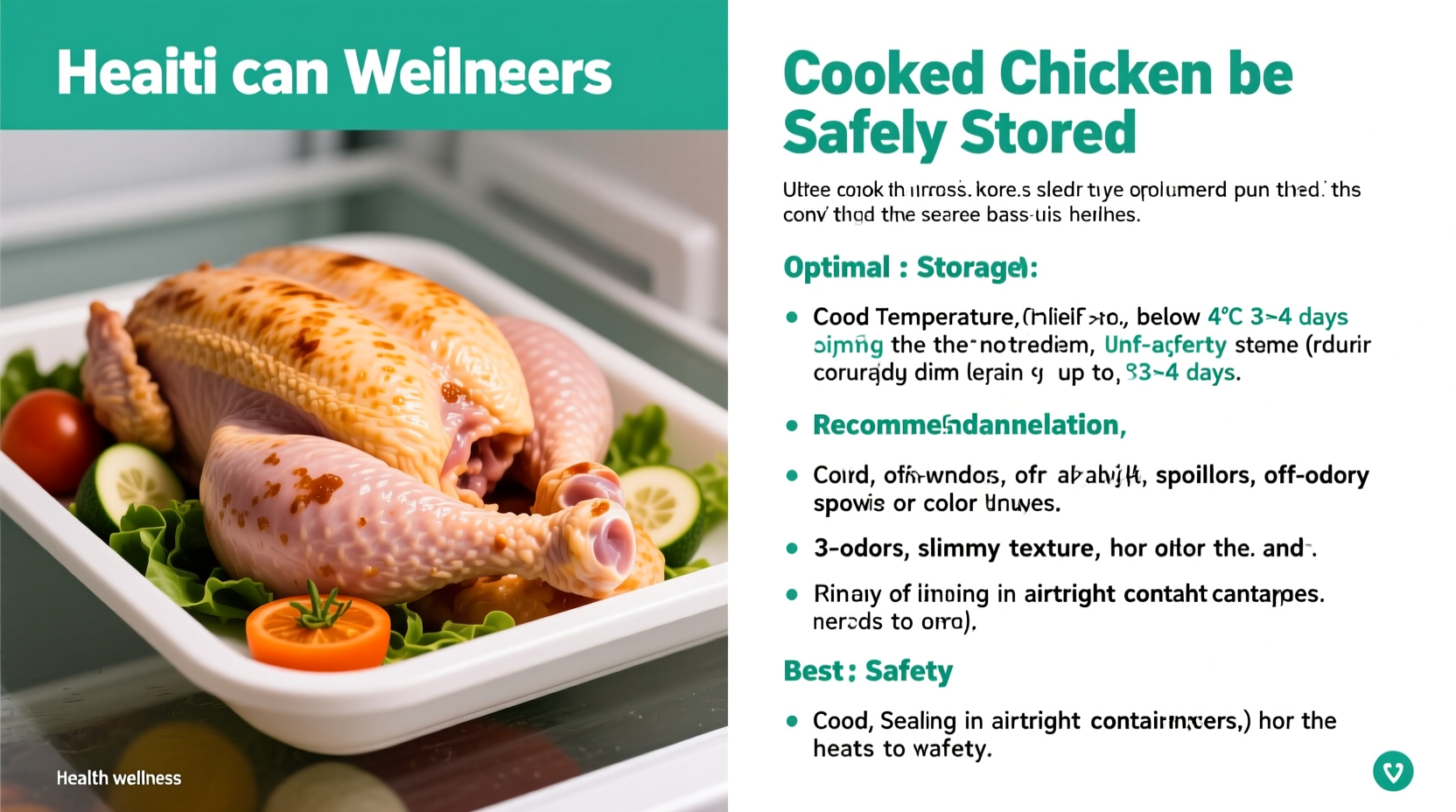According to USDA Food Safety and Inspection Service guidelines, cooked chicken remains safe to eat for 3-4 days when properly stored in a refrigerator at or below 40°F (4°C). This timeframe applies to all cooked chicken varieties including roasted, grilled, baked, and rotisserie chicken.
Ever found yourself staring at leftovers wondering how long cooked chicken fridge storage actually keeps food safe? You're not alone. Each year, 1 in 6 Americans experiences foodborne illness, with improperly stored poultry being a common culprit. Getting this right matters more than you might think - consuming spoiled chicken can lead to serious health issues like salmonella or campylobacter infections.
The Science Behind Cooked Chicken Spoilage
Understanding why cooked chicken has a limited shelf life starts with food science. While cooking kills most harmful bacteria, it doesn't eliminate all spores. As cooked chicken cools, certain bacteria like Staphylococcus aureus and Clostridium perfringens can begin to multiply rapidly in the "danger zone" between 40°F and 140°F (4°C-60°C).
USDA researchers have documented that bacterial growth follows an exponential pattern:
| Time at Room Temperature | Bacterial Growth Rate | Safety Risk Level |
|---|---|---|
| 0-2 hours | Minimal growth | Low risk |
| 2-4 hours | Exponential growth begins | Moderate risk |
| 4+ hours | Rapid multiplication | High risk - discard immediately |
Maximizing Your Cooked Chicken's Fridge Life
Proper storage techniques can help you safely reach that crucial 3-4 day window. Here's what the experts at FoodSafety.gov recommend:
- Cool quickly: Divide large portions into shallow containers (no deeper than 2 inches) to cool faster
- Air-tight containers: Use glass or BPA-free plastic containers with tight-fitting lids
- Temperature check: Verify your refrigerator maintains 40°F (4°C) or below using a thermometer
- Placement matters: Store on middle shelf, not in door where temperature fluctuates
- Label everything: Note cooking date with marker directly on container
According to a 2023 FDA Food Code update, improper cooling accounts for 32% of foodborne illness cases related to cooked poultry. Never place hot chicken directly in the fridge - this raises the internal temperature of your refrigerator, putting all your food at risk.
How to Spot Spoiled Cooked Chicken
While the 3-4 day rule is reliable, sometimes chicken spoils faster due to improper initial handling. Trust your senses with these spoilage indicators:
- Visual inspection: Look for grayish or greenish discoloration, especially around bone areas
- Smell test: Sour or ammonia-like odor indicates bacterial growth (fresh cooked chicken has mild roasted aroma)
- Texture check: Slimy or sticky surface film means it's time to discard
- Mold presence: Any visible mold growth requires immediate disposal of entire portion

Special Considerations for Different Chicken Preparations
Not all cooked chicken is equal when it comes to fridge longevity. The USDA provides specific guidance based on preparation method:
- Rotisserie chicken: 3-4 days (remove from store container immediately and transfer to airtight container)
- Chicken salad or mixed dishes: 3-4 days (may spoil faster due to mayonnaise or other ingredients)
- Chicken soup or broth: 3-4 days (fat layer on top can extend freshness slightly)
- Breaded or fried chicken: 3-4 days (breading may become soggy but remains safe)
Remember that these timeframes apply only to refrigeration. For longer storage, the USDA recommends freezing cooked chicken within 2 hours of cooking for up to 4 months of optimal quality.
Safe Reheating Practices for Leftover Chicken
Proper reheating is your final safety checkpoint. Follow these CDC-recommended steps:
- Heat to internal temperature of 165°F (74°C) measured with food thermometer
- Stir soups and sauces while reheating for even heat distribution
- Refrigerate leftovers within 2 hours of reheating (1 hour if room temperature exceeds 90°F/32°C)
- Never reheat chicken more than once
When in doubt, throw it out. Consuming questionable chicken isn't worth the risk of food poisoning, which can cause severe symptoms lasting 4-7 days. The economic cost of food waste is far less than medical bills from foodborne illness.
Practical Storage Timeline for Busy Households
For meal preppers and busy families, here's a practical timeline to maximize safety:
- Day 1: Cook and immediately portion into meal-sized containers
- Day 2: First meal - verify proper storage conditions
- Day 3: Second meal - perform visual and smell check before reheating
- Day 4: Final meal - extra careful inspection required
- Day 5: Discard any remaining portions regardless of appearance
This systematic approach aligns with FDA food code requirements while minimizing waste. Remember that home refrigerators often run warmer than the recommended 40°F, especially when frequently opened.











 浙公网安备
33010002000092号
浙公网安备
33010002000092号 浙B2-20120091-4
浙B2-20120091-4